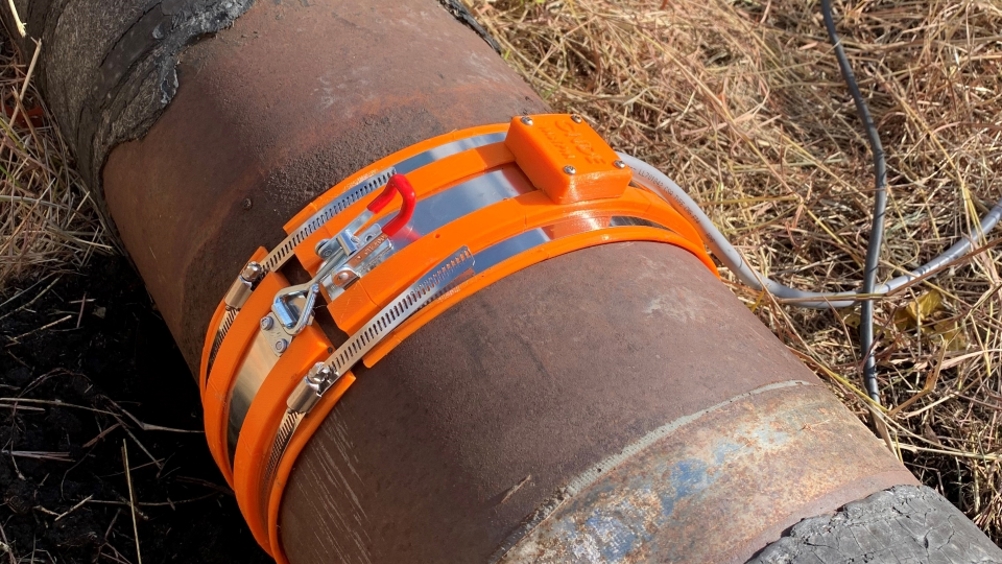Pipeline collar detects leaks before they occur
Pipeline operators will be able to detect leaks before they occur with a Magnetostrictive Transducer (MsT) Collar developed at the Southwest Research Institute (SwRI) in San Antonio, Texas.

The MsT device, which utilises SwRI-developed Magnetostrictive Sensor (MsS) technology, employs ultrasonic guided wave technology to detect anomalies in pipes
“Pipeline corrosion resulting in leaks is very common,” said SwRI staff engineer Sergey Vinogradov, who developed the technology with staff engineer Keith Bartels and other SwRI staff members. “There are only a few current methods to detect defects before they cause leaks. Quite often, the pipe is repaired and re-inspected after a leak occurs. We’ve developed a technology that can consistently monitor the pipe’s condition, hopefully preventing leaks from happening in the first place.”
The Magnetostrictive Transducer (MsT) Collar was originally developed by SwRI in 2002 but has since been updated with a flat, thin design that allows it to be used on pipes in tight spaces. In custom configurations, it can withstand heat up to 400oF, the company said, adding that the new, segmented MsT design also features eight sensors that give the transducer the ability to more accurately identify where corrosion is occurring.
Register now to continue reading
Thanks for visiting The Engineer. You’ve now reached your monthly limit of news stories. Register for free to unlock unlimited access to all of our news coverage, as well as premium content including opinion, in-depth features and special reports.
Benefits of registering
-
In-depth insights and coverage of key emerging trends
-
Unrestricted access to special reports throughout the year
-
Daily technology news delivered straight to your inbox










CCC Report Finds UK Climate Targets Still Within Reach
In 1990 67% of the UK´s electricity came from coal-fired power stations and even without renewables the transition to gas was a major contributor to...